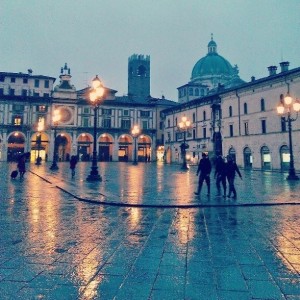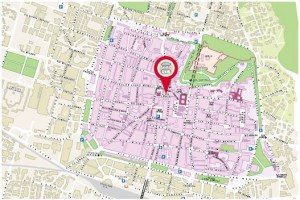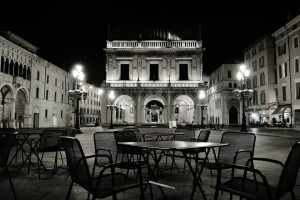The renaissance Loggia Square is the core of Brescia, because of its position and the presence of the Loggia, an important Venetian building. The square is sadly famous for the massacre during an antifascist demonstration, the 28th of May 1974.
Loggia Square was planned in the Renaissance period, and the construction of the building was finished at the end of the XV century. The square has a rectangular shape, and it is delimited by Venetian buildings, such as the Loggia, built between 1492 and 1574, under the supervision of Filippo Grassi. The building became the seat of administration and its upholstery was destroyed by a fire that also burnt some paintings by Tiziano. All around the square there are sixteenth-century Venetian buildings, and in front of the Loggia there are renaissance colonnades, with a “Clock Tower” on top of them, called in this way because of the presence of an ancient clock (1546) that has, on its angles, copper angels, that are the representation of winds, and also there are two male bronze statues, called “i macc de le ure”, that mark daily hours by beating the hammer on the bell on the top of the clock.
On the southern side of the square there is the building of Monte di Pietà Vecchio,that has, on its lower part, a Venetian small loggia divided into two arches, and its main facade is decorated with Roman inscriptions. On the upper part of the building there is a small loggia with 7 small arches and a balcony, probably used as a pulpit. At north-east, there is the monument to Beautiful Italy, built in 1864 in substitution of the Venetian column with Saint Mark’s lion on the top, destroyed by the revolutionaries in 1797.
The square is sadly known because of the massacre on 28th May 1974: during an antifascist demonstration 8 people were killed and 102 injured.
Today the square hosts lots of events and concerts, in particular in summer.
PDF file download: Loggia Square
Web site: http://www.lombardiabeniculturali.it/architetture/schede/LMD80-00117/

